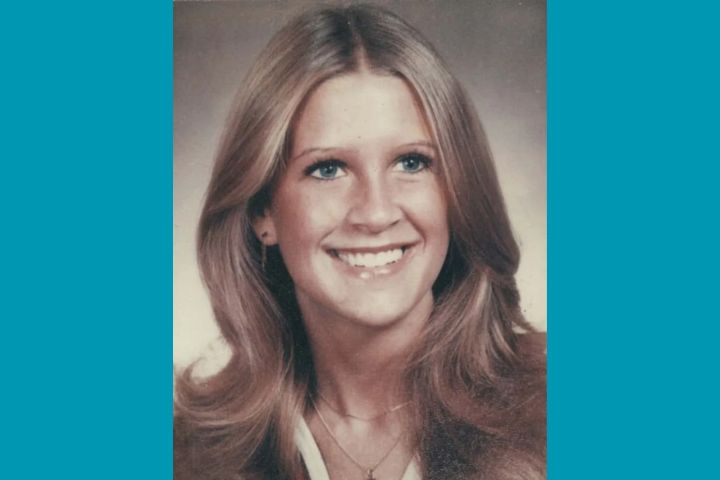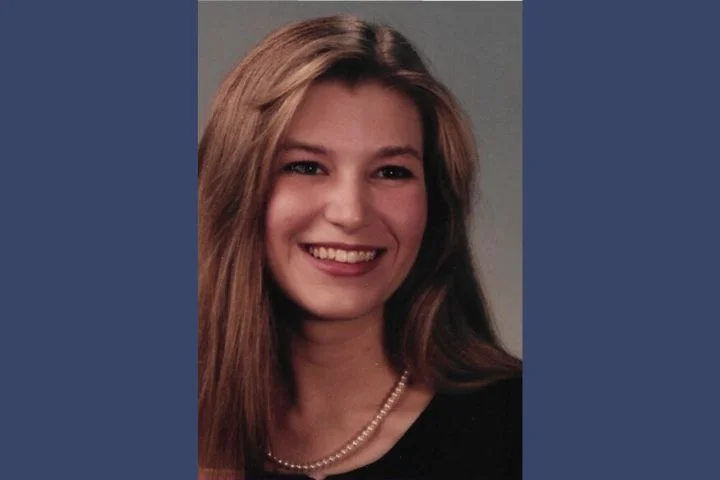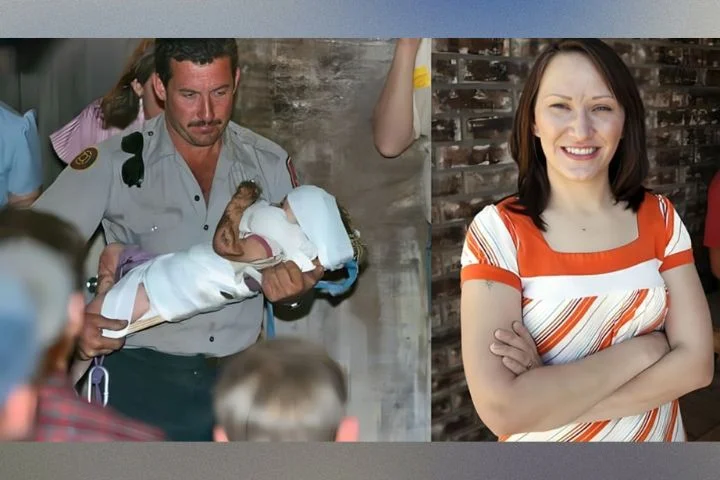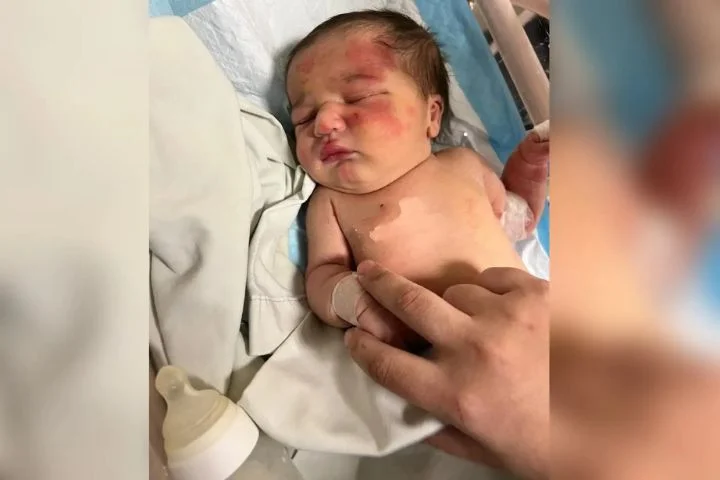Tracey Neilson was in a celebratory mood on the morning of Monday, January 5, 1981. It was her 21st birthday and she was looking forward to having a nice dinner with her husband, Jeff, that evening. Tracey and Jeff were still newlyweds — they had gotten married the previous July — and it was the first birthday they were celebrating as a married couple. Jeff, who was in his first year of medical school at the University of Oklahoma, left early that morning for class, promising his wife he would be home by 5:00 pm for her birthday dinner.
Tracey spent the morning running a couple of errands, including going to the grocery store. Neighbors saw her return to her home at the Jamestown Square Apartments in Moore, Oklahoma shortly before noon. She was supposed to meet up with one of her sorority sisters for lunch that afternoon but never made it; she was never seen alive again.
Jeff finished class around 4:00 pm and stopped by a department store in Oklahoma City to purchase a bottle of perfume for Tracey’s birthday gift. He arrived home shortly after 5:00 pm and found the apartment door unlocked. When he went inside, he saw that Tracey had been doing some ironing in the living room; the ironing board was still set up and the television was on, but there was no sign of Tracey.
Calling out for his wife, Jeff walked through the kitchen and found two lobster tails on the kitchen counter; it was clear that Tracey had bought them to prepare for dinner that night but she wasn’t in the kitchen. Slightly confused, Jeff made his way into the master bedroom, still calling Tracey’s name. As soon as he entered the bedroom he was met with a horrific sight. His wife was lying on the floor, covered in blood. It was obvious she was de*ad.
Jeff immediately ran out of the apartment, screaming for help. He was friends with the couple who owned the apartment complex and went directly to their home and pounded on their door. When they let him in, he had trouble explaining exactly what he had seen but begged them for help. They called the Moore Police Department.
The first police officers arrived at the Jamestown Square Apartments within minutes and confirmed that they were dealing with a ho*micide. Detectives found no signs of forced entry into the apartment and no signs of a struggle inside. Tracey was wearing a pair of blue jeans and a plaid shirt; she had not been sexually assaulted. Nothing was missing from Tracey’s purse and it didn’t appear that anything had been stolen from the apartment; investigators were at a loss when it came to determining a motive for the brutal crime.
Tracey seemed like an unlikely victim. She grew up in the tiny town of Canadian, Texas, where her parents owned a ranch. Tracey was one of three children born to Jim and Sandy Waterfield and had a close relationship with her siblings and her parents. She attended Canadian High School, where she was an honor student and an exceptional athlete. She was the kind of person everyone wanted to be around.
Tracey graduated from Canadian High School in 1978; she was the salutatorian of her class and planned to continue her education at Oklahoma State University, the same school her father had attended. She packed her bags for Stillwater, Oklahoma, around three hours away from her hometown, and immediately threw herself into college life.
At OSU, Tracey joined a sorority and made dozens of new friends. As in high school, everyone she met seemed to be attracted to her exuberant and friendly personality. It wasn’t long after she started at OSU that she met the man she would marry, Jeff Neilson. Tracey was instantly attracted to Jeff, who was a pre-med student at OSU at the time. The attraction was mutual; Jeff would tell people he felt like the luckiest man in the world to be dating Tracey.
Jeff proposed to Tracey over Christmas break when she was a sophomore and he was a senior. They got married seven months later, on July 26, 1980, and spent their honeymoon in Colorado Springs, Colorado. Jeff was scheduled to start medical school at the University of Oklahoma that fall, so Tracey made the decision to transfer there from Oklahoma State University. After returning from their honeymoon, the couple moved into the Jamestown Square apartment complex in Moore.
Tracey entered the University of Oklahoma as a junior physical therapy major and quickly made new friends, though she remained close with her former sorority sisters from Oklahoma State University. The fall semester was uneventful; both Jeff and Tracey were busy with classes but always made time for each other. It was clear to everyone who met them that they were madly in love and looking forward to a bright future once they both finished school. No one could have predicted the events that took place on January 5, 1981.
That Monday had been Jeff’s first day back to class after the winter break; Tracey’s undergraduate classes weren’t scheduled to resume until that Wednesday. She told Jeff that she was going to go to the grocery store that morning to buy some items for her birthday dinner; the couple had decided to celebrate with a quiet dinner at home rather than go out to a restaurant. Tracey also mentioned that she was supposed to have lunch with one of her old sorority sisters.
Investigators were able to confirm that Tracey made it safely to the grocery store and back; the food she had purchased was found in the apartment. When they checked with the friend she was supposed to meet up with that afternoon, however, they learned that the friend had canceled the lunch date at the last minute.
Trying to narrow down the time of Tracey’s de*ath, investigators canvassed the apartment complex looking for anyone who might have seen her that day. They determined that the last confirmed sighting of her had been shortly before noon when she returned home with her groceries. Several friends and family members tried to call her that afternoon to wish her a happy birthday, but she hadn’t answered the phone. The last family member to speak with her had been her grandmother, who called to say happy birthday around 10:00 am.
The medical examiner determined that Tracey had been ki*lled around noon; she had likely died shortly after her return from the grocery store. It had been a particularly brutal murd*er; Tracey had been stabbed more than 20 times and her throat had been slashed. Oddly, despite the horrific nature of the crime, there were no signs of a struggle inside the apartment. The ki*ller had somehow managed to subdue Tracey almost immediately.
None of the other residents of the apartment complex reported hearing anything unusual that afternoon and there were no signs of forced entry into Tracey’s apartment. Detectives theorized that Tracey must have known her ki*ller and willingly let him into her home, but friends and family members weren’t so sure. They noted that Tracey had grown up in a very small town and was an extremely trusting individual; if someone had knocked on her door and asked for help of some kind she would have let them in without hesitation.
Several neighbors reported seeing a strange man hanging around the apartment complex around the time of Tracey’s murd*er, and one person said they saw a dark-haired young man actually enter the apartment shortly before noon. Witnesses provided a decent enough description of both men that a sketch artist was able to come up with composite sketches of each; they were released to the public but the identities of the men were never determined.
From the start of the investigation, Moore Police Lt. Ray Homer knew it was going to be a difficult investigation. He told reporters that the fact Tracey was still fully clothed and nothing was missing from the apartment made it hard for them to determine why she had been ki*lled. “The motive is still up in the air for us. This is going to be a time-consuming investigation.”
Detectives began interviewing everyone who was associated with Tracey, starting with close family members. Jeff, as both her husband and the person who found her body, was immediately considered a prime suspect, but it didn’t take long for investigators to announce that they had cleared him of any involvement. He fully cooperated with authorities and was able to account for his whereabouts at the time of the mur*der; additionally, it was clear to anyone who saw him that he was completely devastated by the loss of his wife.
The Oklahoma State Bureau of Investigations assisted the Moore Police Department in investigating Tracey’s mur*der, but even the additional resources weren’t enough to crack the case and the motive remained elusive. According to Lt. Homer, the detectives were baffled by what appeared to be a completely senseless ki*lling.
A task force was assembled to work on the case full time; it consisted of four detectives from the Moore Police Department, four agents from the Oklahoma SBI, and a lab technician. Together they went back over all of the evidence collected at the crime scene but found nothing that brought them closer to finding her ki*ller. They admitted that they couldn’t even be sure if she had been ki*lled by a stranger or by someone she knew. It was a troubling thought for friends and family, who wondered if a ki*ller was walking among them.
A few weeks after the mur*der, with progress on the investigation appearing to stall, Tracey’s friends and family members announced that they were offering a $10,000 reward for information leading to the arrest of her ki*ller. Several bankers from Canadian, Texas, soon added another $12,000 to the reward fund, bringing the total offered to $22,000. Even this significant sum failed to bring in any viable leads.
Two weeks later, the reward was increased to $35,000. Fearful that someone with information was waiting for the reward to grow even higher before coming forward, Tracey’s family announced that the reward would be capped at $35,000.
Three months after Tracey was ki*lled, the task force was still working on the case full time but had made little progress. They had interrogated Tracey’s family members and friends from both Oklahoma and Texas but no one they spoke with seemed to have any information about who might have wanted Tracey d*ead.
By the time the investigation hit the four-month mark, detectives had exhausted all leads and failed to make any substantial developments in the case. They began re-interviewing all of Tracey’s acquaintances, hoping to learn something they might have missed during the earlier stages of the investigation. Despite all their efforts, they failed to identify Tracey’s kil*ler or the motive behind her de*ath. The case began to stall and soon went cold.
In October 1988, the case made it back into the headlines after officials with the Oklahoma State Bureau of Investigation remarked that they might be able to solve Tracey’s mu*rder if they had access to a computerized fingerprint system. It was the first time the public learned that fingerprints had been recovered at the crime scene but detectives had been unable to match them to anyone. At the time, fingerprints were still stored on individual fingerprint cards; without a suspect to compare, it could take years to go through each card in search of a match.
Jeff’s parents launched a public campaign in favor of getting a computerized fingerprinting system, and in May 1990 the state approved the necessary funding to do so. The Oklahoma SBI soon had all of its fingerprint cards scanned into an automated fingerprint identification computer but failed to find a match for the prints taken from Tracey’s apartment. The case faded from the headlines and went cold once more.
The next major development in the case wouldn’t be announced for another 25 years. In January 2015, officials held a press conference and asked for the public’s help in identifying the origin of a cable repair book that had been found at the crime scene. Stating that they had been unable to release this information before due to privacy laws that had recently been amended, authorities admitted that they had been holding on to this piece of evidence since the day of the murd*er.
When they had processed the original crime scene, investigators had found a ticket book with receipts for cable repair; the last receipt in the book was for work done at Tracey’s apartment at 11:51 am on the day of the mur*der. For decades, detectives had tried to identify the owner of the ticket book without success; they hoped that by releasing a copy of the receipt that someone from the public would be able to identify where it had come from.
Within a few months, officials announced that they had confirmed that the book had been one used by employees of Southwestern Bell Telephone, which by 2015 was part of AT&T. Despite questioning employees who had worked for the company at the time of the mur*der, they were unable to identify the initials on the receipt found at the crime scene and believed that someone may have stolen the book from an employee and then used it to gain access to Tracey’s apartment.
Detectives also announced that the ki*ller had taken at least one item from the crime scene; Tracey’s keychain, which consisted of a piece of wood with her name painted on it, had never been recovered and it was thought that the ki*ller had taken it, likely as a souvenir. They released a sketch of the keychain in the hopes that someone would recall seeing it, but to date no one has come forward with any information about it.
A new reward in the case was offered in 2015; Jeff and Tracey’s family donated money and announced that they were offering $100,000 for information leading to the ki*ller. It remains available.






